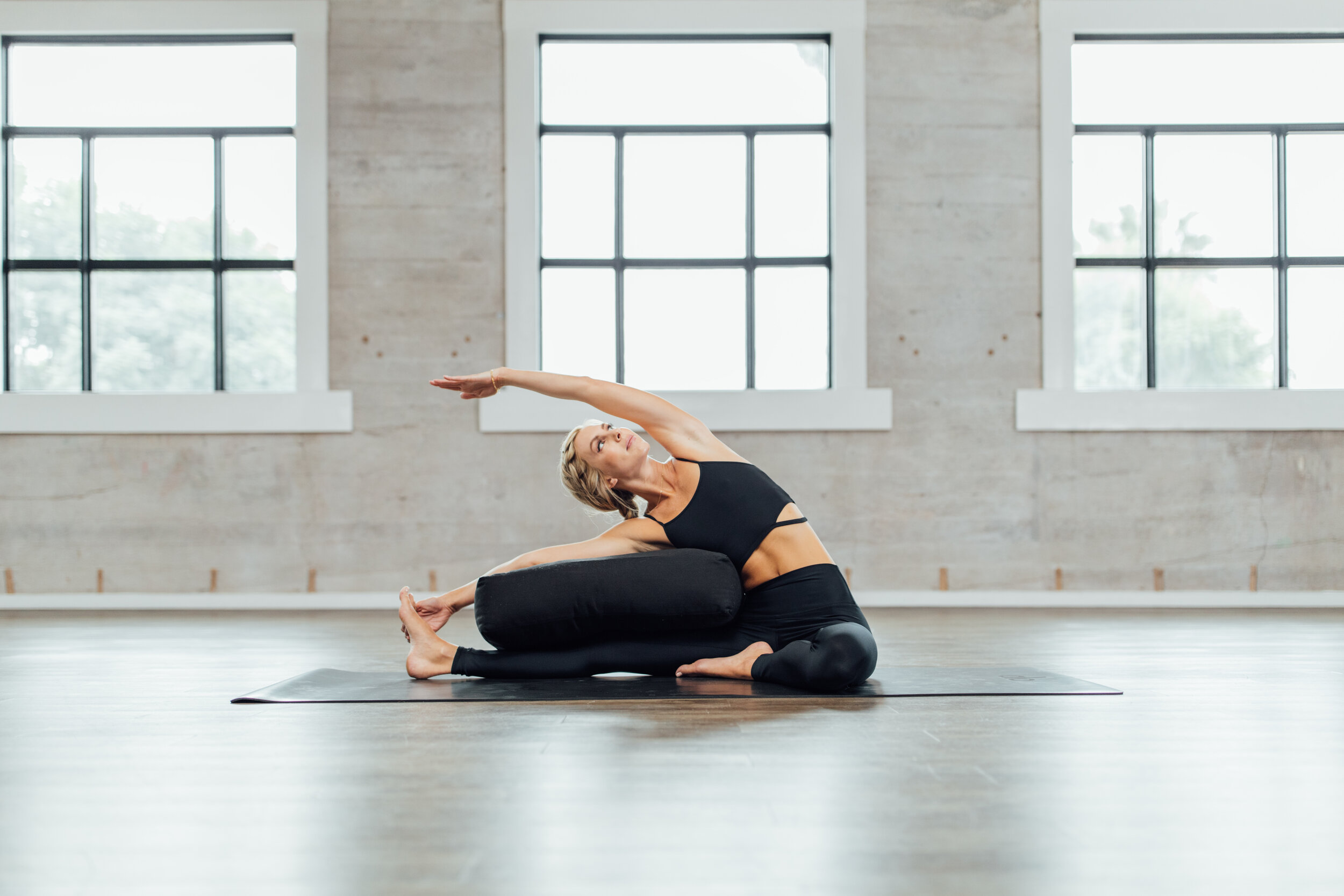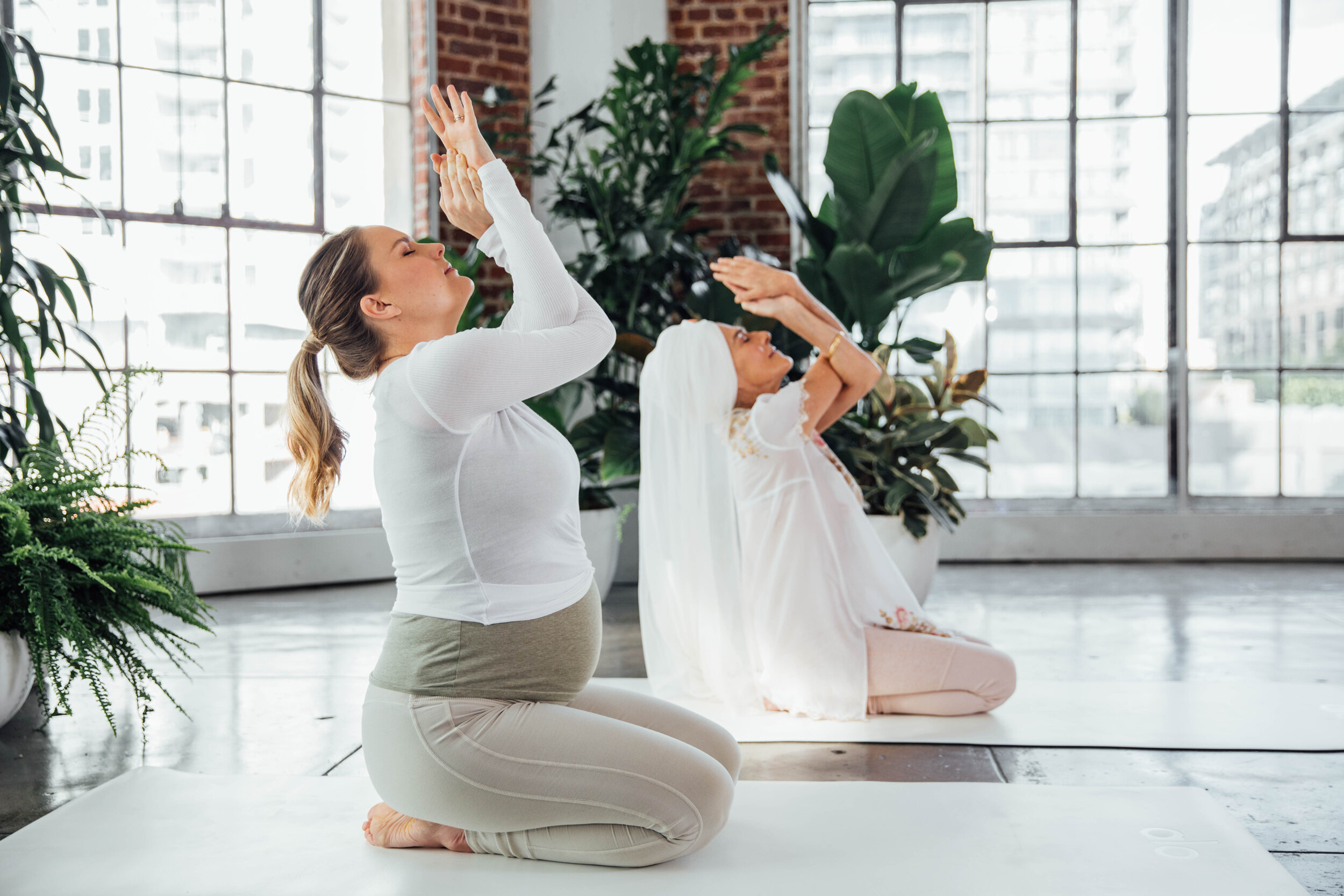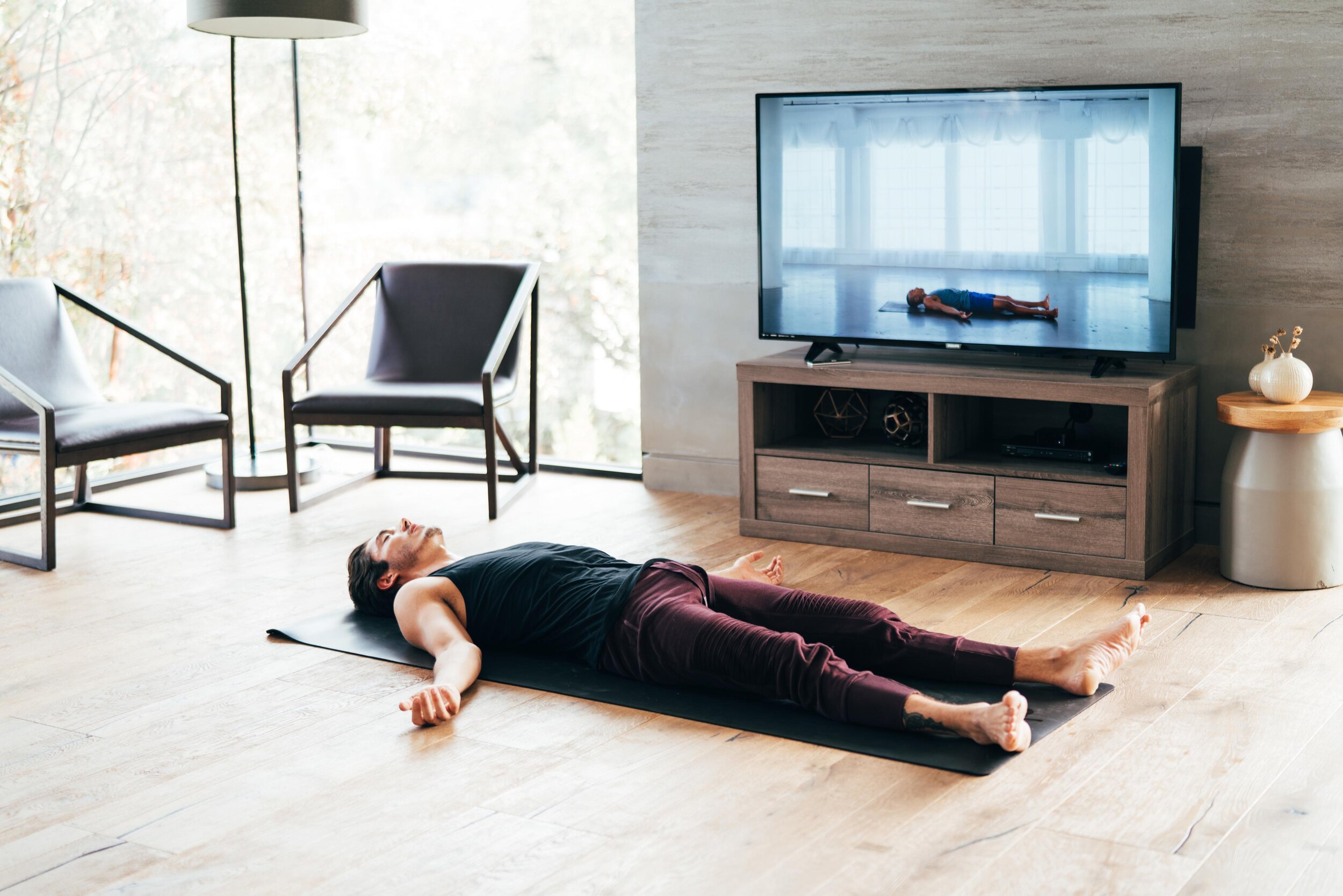A Yin Yoga Sequence for the Fall Equinox
The Fall Equinox is almost here, signaling a time to turn inward and embrace the dark, lunar sides of our lives. As the nights get longer and the days get cooler, the perfect time for soft, slow Yin Yoga.
We’re halfway from the Summer Solstice to the Winter Solstice, and we’re starting to wind down, turning that bright, sunny energy into something more subdued and reflective. This fall Yin Yoga sequence celebrates our fire while transitioning us toward focusing on our roots. You’ll start by facing the sky as if to catch those last summer rays, then ground and lengthen to celebrate growth. You’ll finish by surrendering your body to the earth. This sequence also subtly works your hips to release lingering emotions.
Energetically, autumn is associated with the metal element and the Large Intestine Meridian, which helps us clear what doesn’t serve us physically, mentally, and spiritually. Throughout this sequence, you’ll draw attention to your abdominal organs — so consider what you’re letting go as another solar year comes to a close. The Large Intestine Meridian’s yang counterpart is the Lung Meridian, so consider a vigorous pranayama exercise before and after practice.
Yin Yoga works with different tissue groups, so it shouldn’t feel the same as a Yang class like Vinyasa. When you find your edge — where it would feel about right to stop in a more active pose — dial it back about 30 percent. It can be hard to get used to, but with a regular Yin practice, you’ll start noticing the difference in your Yang practice, too. You should never feel in pain or tingly.
In a typical Yin class, an instructor is there to keep time, leaving you to enter the poses fully without worrying about how many minutes have passed. If you’re doing this on your own time, try setting a timer with a very gentle sound to remind you to switch poses. You can also get creative and make an ambient music playlist with a song timed to each hold. (Need some yoga music inspiration? Check out Alo Moves on Spotify).
This fall-themed sequence should take around 45-60 minutes to complete, depending on how long you hold the yin poses.
1. Child’s Pose
Like in a Vinyasa class, Child’s Pose lays a foundation and helps us prepare for the practice ahead. It’s basically the same in both Yin and Vinyasa — start on your knees, sink your hips back, and let your torso and head sink into the floor. The only difference is that It should feel restorative and easy to hold, so if you normally feel a little strain or stretch, back off it just a little.
Hold: 5 minutes
Modifications: Try a bolster, pillow, or folded blanket under your chest.
Benefits: Resting and preparing for practice.
2. Eagle Arms Pose
Come up to Hero Pose (resting on your knees) or Easy Seated Pose (cross-legged) with a tall spine. Just like in Eagle Pose in Vinyasa, swing your right arm under your left arm, then wrap your forearms around each other with your hands facing each other. Begin to pull your elbows away from the chest, expanding your shoulder blades. Repeat on the other side.
Hold: 3 minutes per side
Modifications: If Eagle Arms cause you any strain, draw your left arm across your body, holding it against your chest with your right forearm. Repeat on the other side.
Benefits: Opens the back body. Stretches your shoulders, forearms, and wrists.
3. Reclined Bound Angle
Release your Eagle Arms and slowly recline onto your back. Bend your knees and press the soles of your feet together.
Hold: 5 minutes
Modifications: A rolled-up blanket under your knees or thighs can help take some of the strain off. Experiment with the depth of your knee bend to find the easiest resting point for you. You can also practice this pose with your legs up a wall.
Benefits: Stretches your inner thighs, groin, and knees. Stimulates abdominal organs. Improves circulation.
4. Seated Bound Angle
Sit upright with your legs in the same position as they were in Bound Angle for a little reset. Lengthen your spine and work out any tension that might have arisen.
Hold: 1 minute
Modifications: If this is challenging for you, come to any comfortable seat.
Benefits: Similar to Reclined Bound Angle: Stretches your inner thighs, groin, and knees. Stimulates abdominal organs. Improves circulation.
5. Frog
Come to Child’s Pose, then slide both hands forward and separate the knees, still sitting on your heels. (Picture shows one-legged Frog Pose with chest lifted.)
Hold: 5 minutes
Modifications: Try resting your head on a bolster or pillow, especially if you’re feeling strain on your neck. Alternatively, you can drape your entire chest over a bolster. If your hands tingle, try adjusting your arm position. If you’re feeling strain in your hips, try moving them further forward, or touch your toes together and sink them further back.
For Half Frog, lift your hips until they’re above your knees. For Full Frog, widen your feet to knee’s width before you get your arms into position, then extend your arms one at a time.
Benefits: Opens the groin. Compresses the back. Aids digestion.
6. Windshield Wipers
Slowly move out of Frog, come to a seat, then recline onto your back. Bend your knees and rock them side to side, either with your feet on the ground or your legs pulled into your chest.
Duration: Practice this countermovement for 1-2 minutes.
Modifications: Bring any other movement to your legs that feels good on your back — you could draw circles with your knees or even come into Happy Baby.
Benefits: Releases tension in your back and hips.
7. Twisted Roots
After your Windshield Wipers, hug your knees into your chest and cross your right leg over your left. If you can, hook your right foot behind your left leg. Drop your knees over to the left and relax your legs toward the ground. Open your arms out to a cactus shape and soften your shoulders down to the mat. Turn your head to the right and gaze over your shoulder. Repeat on the other side.
Take a look at our step-by-step guide to Twisted Roots for more guidance.
Hold: 5 minutes each side
Modifications: Come into a simple Supine Twist — without locking your legs together — or just bring one leg to the side for Reclined Twist. If the cactus shape is too much on your arms or shoulders, try a different arm position that feels comfortable for you.
Benefits: Releases tension in the spine, lower back, and neck. Stretches oblique, glutes, hips, and IT band. Opens your chest. Massages digestive organs.
8. Savasana
Close practice with Savasana. Find more guidance with our step-by-step guide to Savasana.
Hold: 10 minutes
Modifications: If this puts strain on your lower back, knees, or hips, try placing a bolster or rolled-up blanket under your knees. You can also practice Savasana with legs up a wall or even on your stomach.
Benefits: Relieves muscular and skeletal tension. Gives your body time to absorb all the benefits of your yoga practice. Reduces stress and anxiety. Calms your mind.
Want more cozy autumn flows? Check out our Hygge Yoga playlist with a 14-day trial to Alo Moves.










